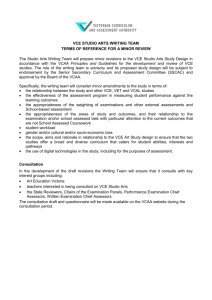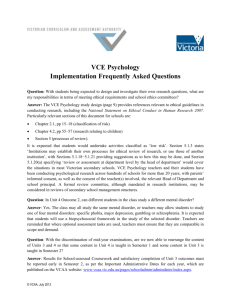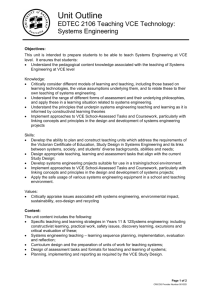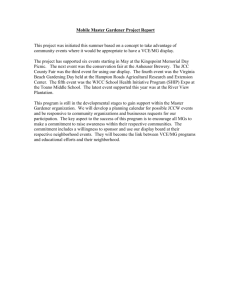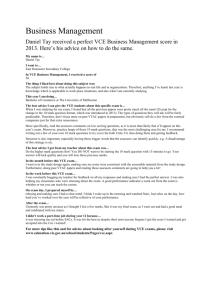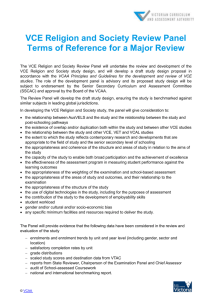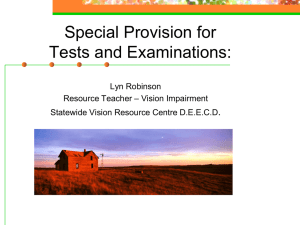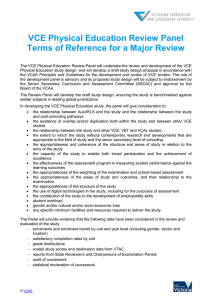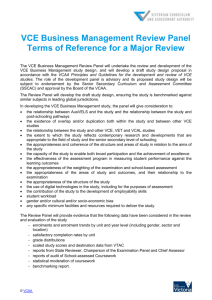Business Management Study Summary
advertisement
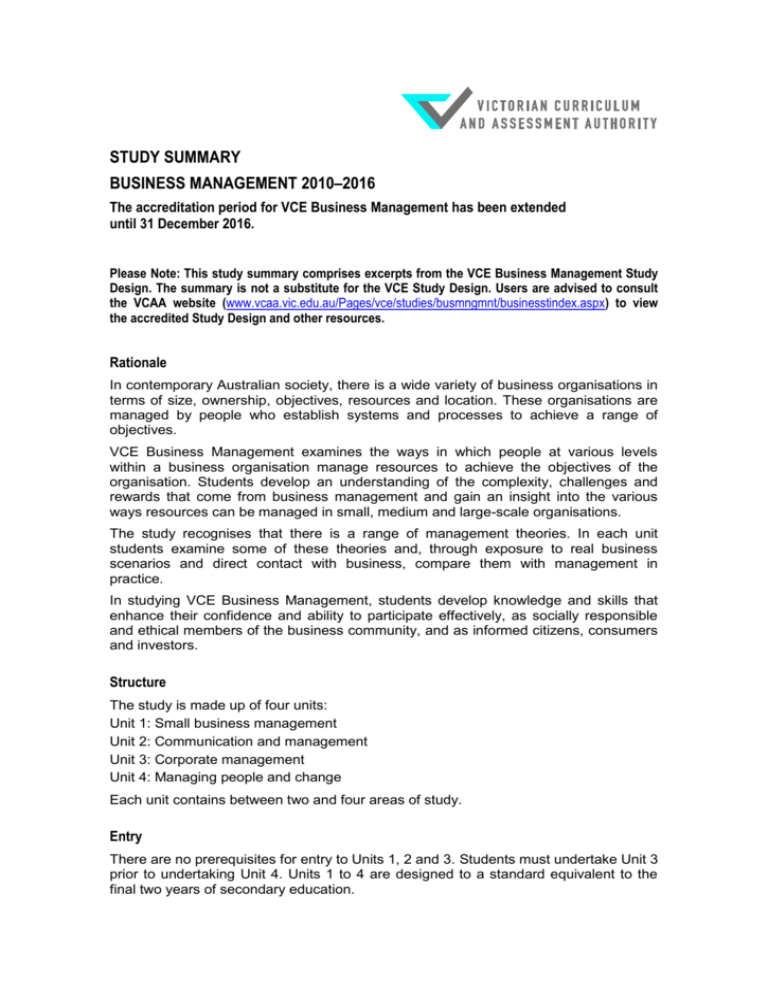
STUDY SUMMARY BUSINESS MANAGEMENT 2010–2016 The accreditation period for VCE Business Management has been extended until 31 December 2016. Please Note: This study summary comprises excerpts from the VCE Business Management Study Design. The summary is not a substitute for the VCE Study Design. Users are advised to consult the VCAA website (www.vcaa.vic.edu.au/Pages/vce/studies/busmngmnt/businesstindex.aspx) to view the accredited Study Design and other resources. Rationale In contemporary Australian society, there is a wide variety of business organisations in terms of size, ownership, objectives, resources and location. These organisations are managed by people who establish systems and processes to achieve a range of objectives. VCE Business Management examines the ways in which people at various levels within a business organisation manage resources to achieve the objectives of the organisation. Students develop an understanding of the complexity, challenges and rewards that come from business management and gain an insight into the various ways resources can be managed in small, medium and large-scale organisations. The study recognises that there is a range of management theories. In each unit students examine some of these theories and, through exposure to real business scenarios and direct contact with business, compare them with management in practice. In studying VCE Business Management, students develop knowledge and skills that enhance their confidence and ability to participate effectively, as socially responsible and ethical members of the business community, and as informed citizens, consumers and investors. Structure The study is made up of four units: Unit 1: Small business management Unit 2: Communication and management Unit 3: Corporate management Unit 4: Managing people and change Each unit contains between two and four areas of study. Entry There are no prerequisites for entry to Units 1, 2 and 3. Students must undertake Unit 3 prior to undertaking Unit 4. Units 1 to 4 are designed to a standard equivalent to the final two years of secondary education. VCE BUSINESS MANAGEMENT 2010–2016 STUDY SUMMARY Unit 1: Small business management Small rather than large businesses make up the large majority of all businesses in the Australian economy. It is the small business sector that provides a wide variety of goods and services for both consumers and industries, such as manufacturing, construction and retail. This, combined with employment opportunities, makes the small business sector a vital component in the success, growth and stability of Australia. Small businesses are tangible to students as they are visible and accessible in daily life. This unit provides an opportunity for students to explore the operations of a small business and its likelihood of success. Unit 2: Communication and management This unit focuses on the importance of effective communication in achieving business objectives. Students investigate communication both internal and external to the business. They develop knowledge of aspects of business communication and are introduced to skills related to its effective use in different contexts. The vital functions of marketing and public relations are considered, with students developing an understanding of the important role these functions play in the ultimate success of a business. Unit 3: Corporate management In this unit students investigate how large-scale organisations operate. Students examine the environment (both internal and external) in which large-scale organisations conduct their business, and then focus on aspects of individual business’ internal environment and how the operations of the business are managed. Students develop an understanding of the complexity and challenge of managing large-scale organisations and have the opportunity to compare theoretical perspectives with practical applications. Unit 4: Managing people and change This unit continues the examination of corporate management. It commences with a focus on the human resource management function. Students learn about the key aspects of this function and strategies used to most effectively manage human resources. The unit concludes with analysis of the management of change. Students learn about key change management processes and strategies and are provided with the opportunity to apply these to a contemporary issue of significance. Assessment Satisfactory Completion The award of satisfactory completion for a unit is based on a decision that the student has demonstrated achievement of the set of outcomes specified for the unit. This decision will be based on the teacher’s assessment of the student’s performance on assessment tasks designated for the unit. Levels of Achievement Units 1 and 2 Procedures for the assessment of levels of achievement in Units 1 and 2 are a matter for school decision. ©VCAA February 2014 2 VCE BUSINESS MANAGEMENT 2010–2016 STUDY SUMMARY Units 3 and 4 The Victorian Curriculum and Assessment Authority will supervise the assessment of all students undertaking Units 3 and 4. In the study of VCE Business Management students’ level of achievement will be determined by School-assessed Coursework and an end-of-year examination. Percentage contributions to the study score in VCE Business Management are as follows: • Unit 3 School-assessed Coursework: 25 per cent • Unit 4 School-assessed Coursework: 25 per cent • End-of-year examination: 50 per cent. ©VCAA February 2014 3


